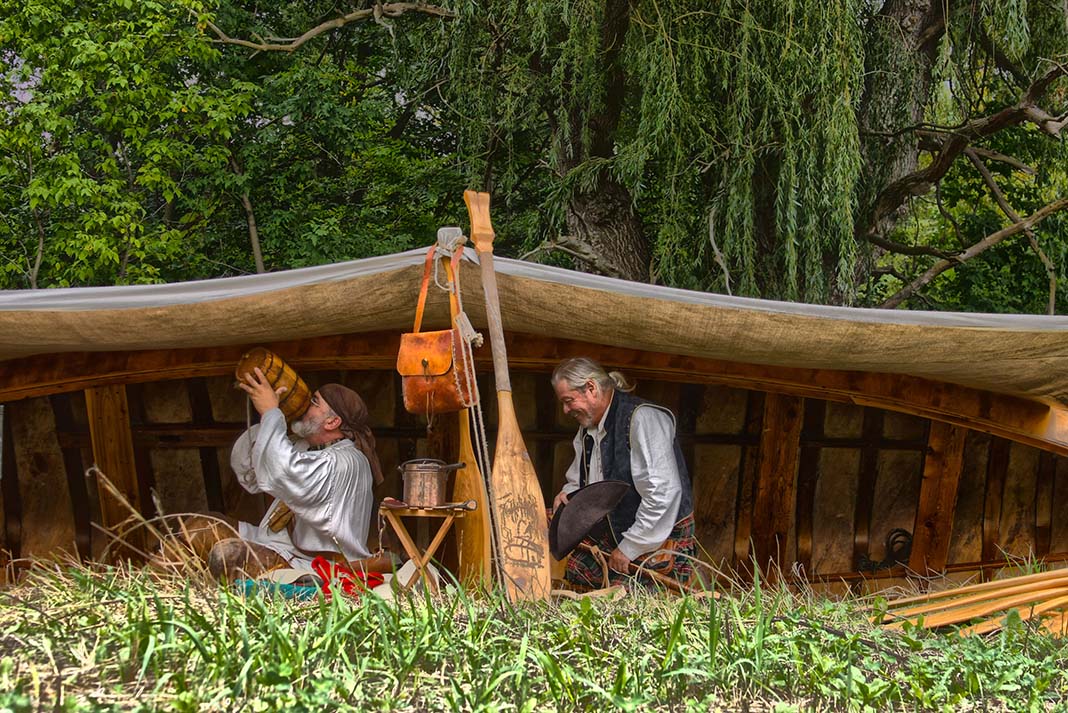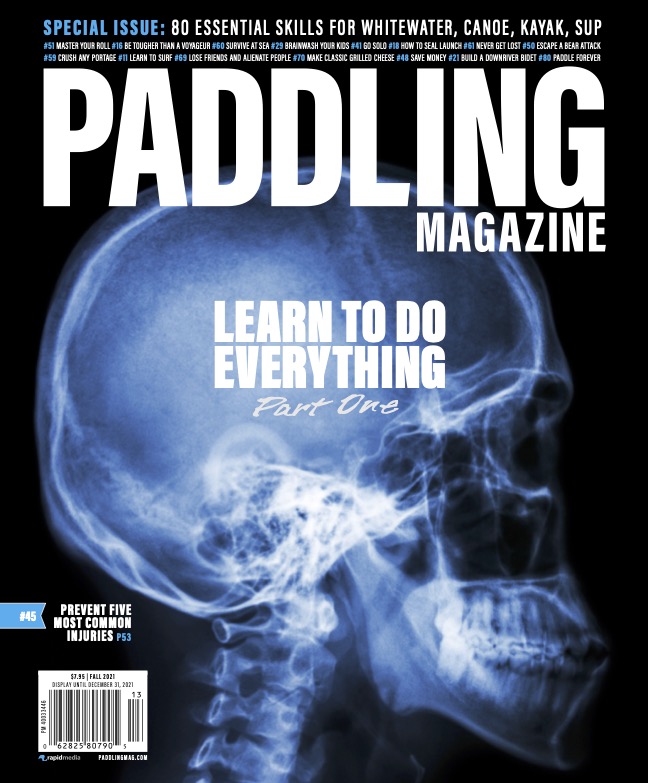Ah, les voyageurs, short on height but legendarily long on suffering and strength. What of those happy-go-lucky little gnomes chanson-ing across the country, paddling 60 strokes a minute and tumping two 80-pound packs across freshly chewed goat paths, their bowels pushing through rotting abdominal walls. Behind their cheerfully colored ceinture fléchée, how tough were the voyageurs, really?
The voyageurs were plenty tough
Can you imagine hour after hour, day after day, week upon week of those call and response ditties? Try this: Visit the iTunes store, search by V’la l’Bon Vent, buy the karaoke rendition, sync your iPod and select repeat, then board an overcrowded Greyhound for a six-week trip from Bonavista to Buenos Aires.
It’s amazing more of them didn’t bail into the wild icy waters of the Ottawa’s Culbute (ass-over-tea-kettle) Rapid just to escape their musical hell. Maybe the strangulated hernias were a pleasant diversion of sufficient intensity to buffer another round of early traditional folk.
“Hey Etienne, apportes-moi un petit peu
de cette bière d’epinette s’il vous plaît.”
Voyageur diet was a deadly combination
And then there’s the food. No matter how you serve it, a steady diet of pea soup or berries and fat mixed around ground hair and animal parts is going to cause a deadly combination of nitrogen, carbon dioxide, oxygen, methane and hydrogen sulfide. My research suggests that, on average, a regular diet produces about half a liter of gas per day, distributed over an average of about 14 daily farts.
Imagine what it might have been like in a long line, nose to tail, straining up a steep and muddy portage. Phew! I’m thinking that in the classic works of Frances Anne Hopkins or Arthur Heming there was more hanging in the air than the early morning mist.

Fancy a swig of bumbo?
And don’t even get me started about the grog. Skunky spruce beer or corked wine is one thing, but these guys got into some serious gut rot. Although they carried fine wine, good rum and French brandy, it was for management only. More often than not, the engagés were offered bumbo—a rum so black, thick and ugly with wood alcohol that it had to be sweetened with brown sugar and flavored with nutmeg.
The worst of the worst was English brandy, a cheap gin flavored with molasses. It has been explained to me as drinking juniper-tinted naphtha stove gas. A great fire starter or fine anesthetic perhaps for when your entrails are dragging on the ground.
Other types of deprivation
What has truly earned my admiration for these trippers of yore however was their tolerance for sleep deprivation. Imagine the time required to make and break camp, to cook up the gruel and make canoe repairs.
In the fur traders’ journals it reads that voyageurs were often up at one and two in the morning having only gone to bed at 10 p.m. (And, don’t get me started about paddling and portaging in the dark.) These hardy chaps couldn’t have slept more than a few scant hours, only three or four, night after night. Eighteen hours of paddling and portaging. Two hours of bug-infested camp chores. Four hours of sleep. I get tired just thinking about it.
“Hey Etienne, apportes-moi un petit peu de cette bière d’epinette s’il vous plaît.”
This article first appeared in Canoeroots and Family Camping, Summer/Fall 2010 and appeared in Paddling Magazine Issue 65. Subscribe to Paddling Magazine’s print and digital editions here, or download the Paddling Magazine app and browse the digital archives here.
Don’t doubt how tough the voyageurs were until you a try a swig of bumbo. | Feature photo: Nancy Greifenhagen/Alamy Stock Photo








